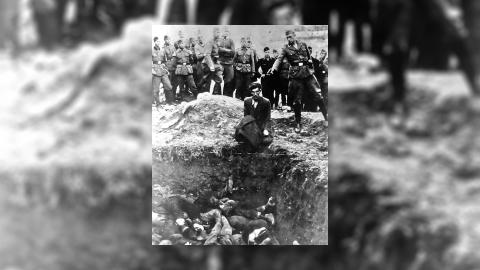The international influence of the Knights Templar
Could treasure hunters Carl Cookson and Hamilton White be on the verge of unlocking the secrets of the world’s most fascinating and enigmatic military order? In Lost Relics of the Knights Templar, the pair travel the world to trace the origins of a hoard of centuries-old artefacts that may shed new light on the lives of the knights, from how they worshipped to why they were wiped out.
Carl and Hamilton’s globe-trotting quest highlights the sheer scale of the Templars’ international influence – as elite fighters, as early bankers, and as property magnates, owning huge swathes of land across Christendom. Their incredible rise was not something anybody could have seen this coming when the order was established in the wake of the First Crusade, after Christian troops had succeeded in capturing the Holy Land.
Following this ferocious victory, European pilgrims started heading out on epic treks to Jerusalem. Seeking penance and absolution from sin, and divine cures for illnesses, these intrepid travellers were set upon by bandits and highwaymen. The bodies of victims were literally strewn across roads, scorched by the unceasing sun. Unsurprisingly, an atmosphere of dread pervaded the pilgrimages. As one pilgrim wrote of his visit to a saint’s tomb, ‘Travellers rest by the water but with great fear, for it is a deserted place and nearby is the town of Ascalon from which Saracens sally forth and kill travellers on these roads.’
One particularly bloody incident in 1119 saw more than 300 Easter pilgrims to Jerusalem slaughtered and 60 others taken as slaves. The situation became so dire that, sometime around 1119 or 1120, French knight Hugues de Payens assembled a small group of fellow fighters to act as protectors for the vulnerable pilgrims. They lodged in a repurposed mosque in Jerusalem, built on the site of the long-destroyed Temple of Solomon on the Temple Mount – a fact that gave rise to their name, the Knights Templar.
From this rather ramshackle beginning, an empire-like organisation was to grow. As well as serving as fearsome fighters in the Crusades, the Templars became incredibly wealthy thanks to the special privileges granted them by the Pope. Exempt from paying tax, and given fat donations by the great and the good of the Christian world, the Templars bought up gigantic estates and created an early kind of international banking system by issuing credit to pilgrims heading east.
Just as corporations today may have offices all over the world, so too did the Templars leave their mark wherever they established a presence. A prominent example in the UK is London’s Temple Church, with its distinctive circular design, which was consecrated in 1185 and functioned as a royal treasury. In the heart of the bustling capital, it’s still an oasis of historical intrigue and a reminder of the power and influence the Templars had in England.
Even more iconic is the Convent of Christ in Tomar, Portugal, which was completed in the 12th Century. The ornate complex is an architecturally magnificent marvel today, but it’s also notable for the dramatic skirmish that took place here in 1190, when the Templars came under attack by North African Muslims of the Almohad Caliphate.
A battle so brutal the entrance to the complex became known as the Gate of Blood
The Grand Master of the Portuguese Templars was a battle-scarred old warrior in his 70s, called Gualdim Pais. He and his men were outnumbered by the besieging forces of the caliphate, but maintained the defence of the Templar stronghold. Not only that, but they managed to repel the enemy forces, in a battle so brutal the entrance to the complex became known as the Gate of Blood. The achievement of Gualdim Pais has since become enshrined as one of the most awesome chapters in Templar lore.
Another fascinating monument to the vanished world of the Templars is Chateau Pelerin in Israel. Construction began on this coastal fortress – bedecked with walls and towers – in the early 13th Century, and it was designed to accommodate over 4,000 soldiers. Its superbly secure design, which included a fortified harbour, meant it was able to withstand sieges by both Ayyubids and Mamluks, although it was finally discarded by the Templars following the Fall of Acre in 1291.
Then there’s the fortified medieval village of La Couvertoirade in France. Today, its fairy tale-like warren of winding lanes, stone houses and looming walls beguile visitors who feel like they’re stepping straight into the pages of a fantasy novel. But anyone with an interest in the Templars feels a special frisson, knowing the order created the now-ruined chateau around which the village would grow.
Not all former Templar sites are so obvious or striking. Some old haunts of the order have been erased over the march of centuries, with clues left only in their names. An example is Berlin’s Tempelhof district, which began as an estate run by the Templars in the mid-13th Century. It’s a reminder that Templars had tremendous reach, even in places which bear no signs of their presence all those centuries ago. With their sweeping influence across Europe and the Middle East, it’s no wonder a vast mythology has grown around the order, prompting conspiracy theories, dark speculations and treasure hunts to this day.
















